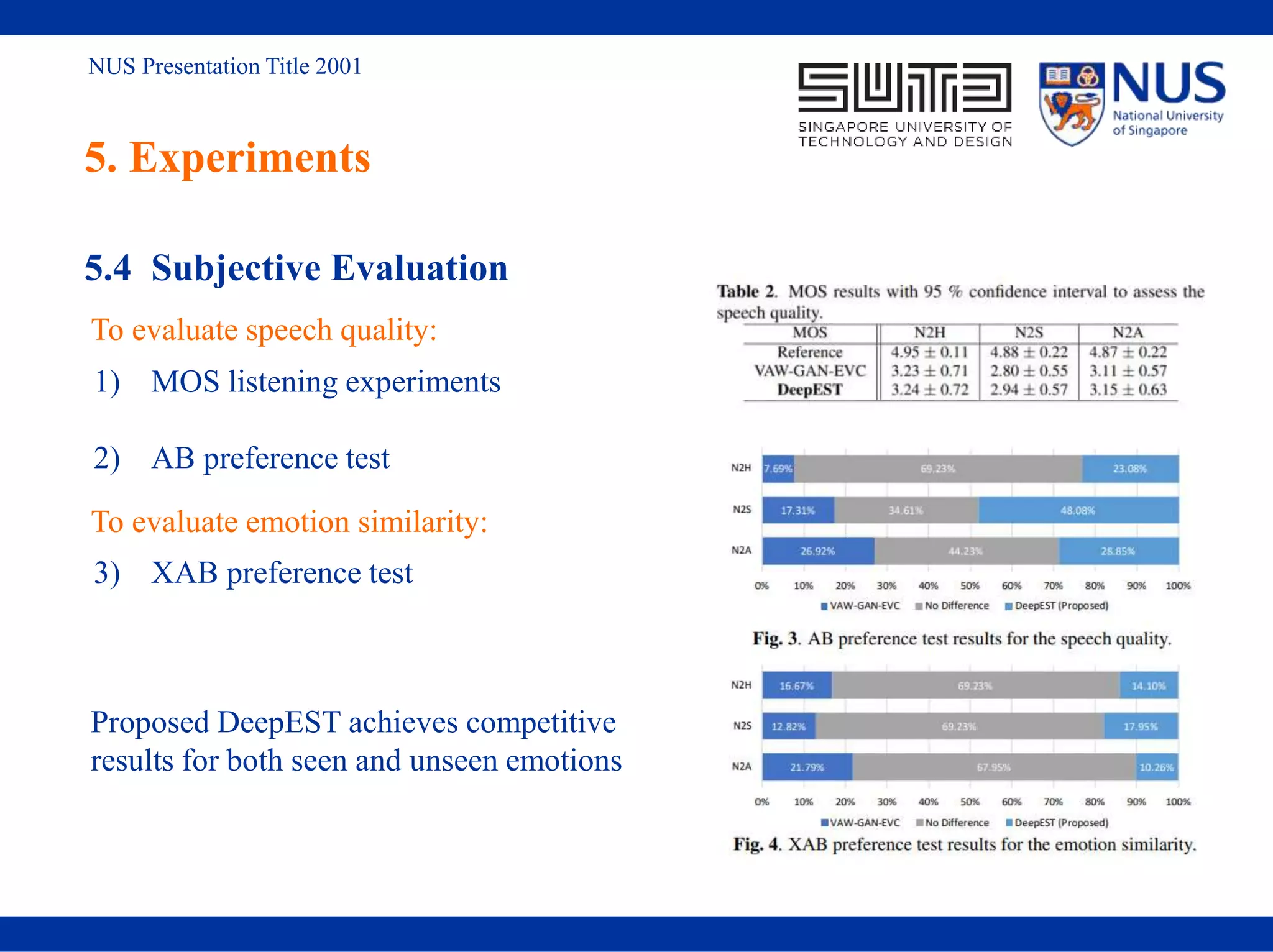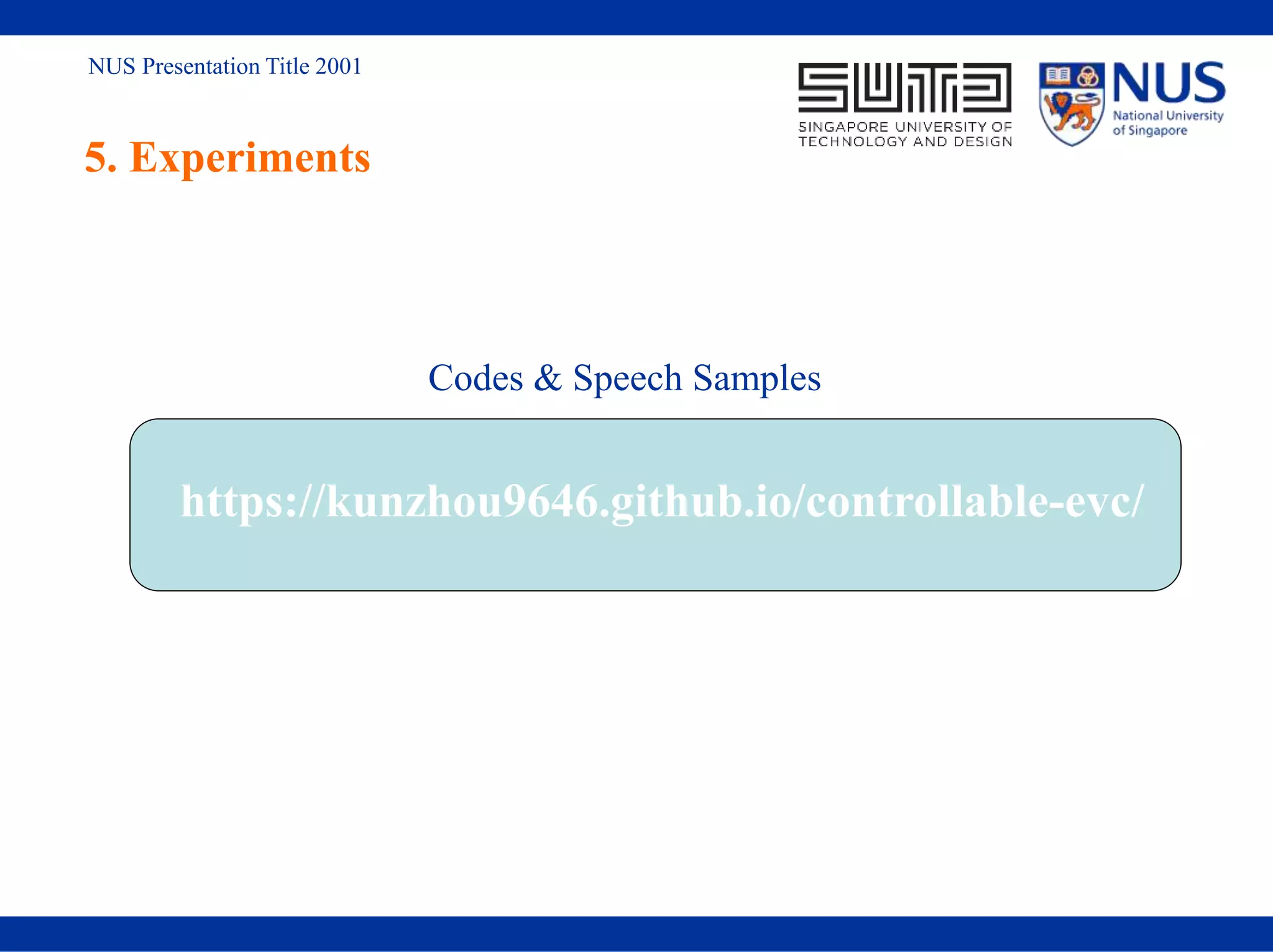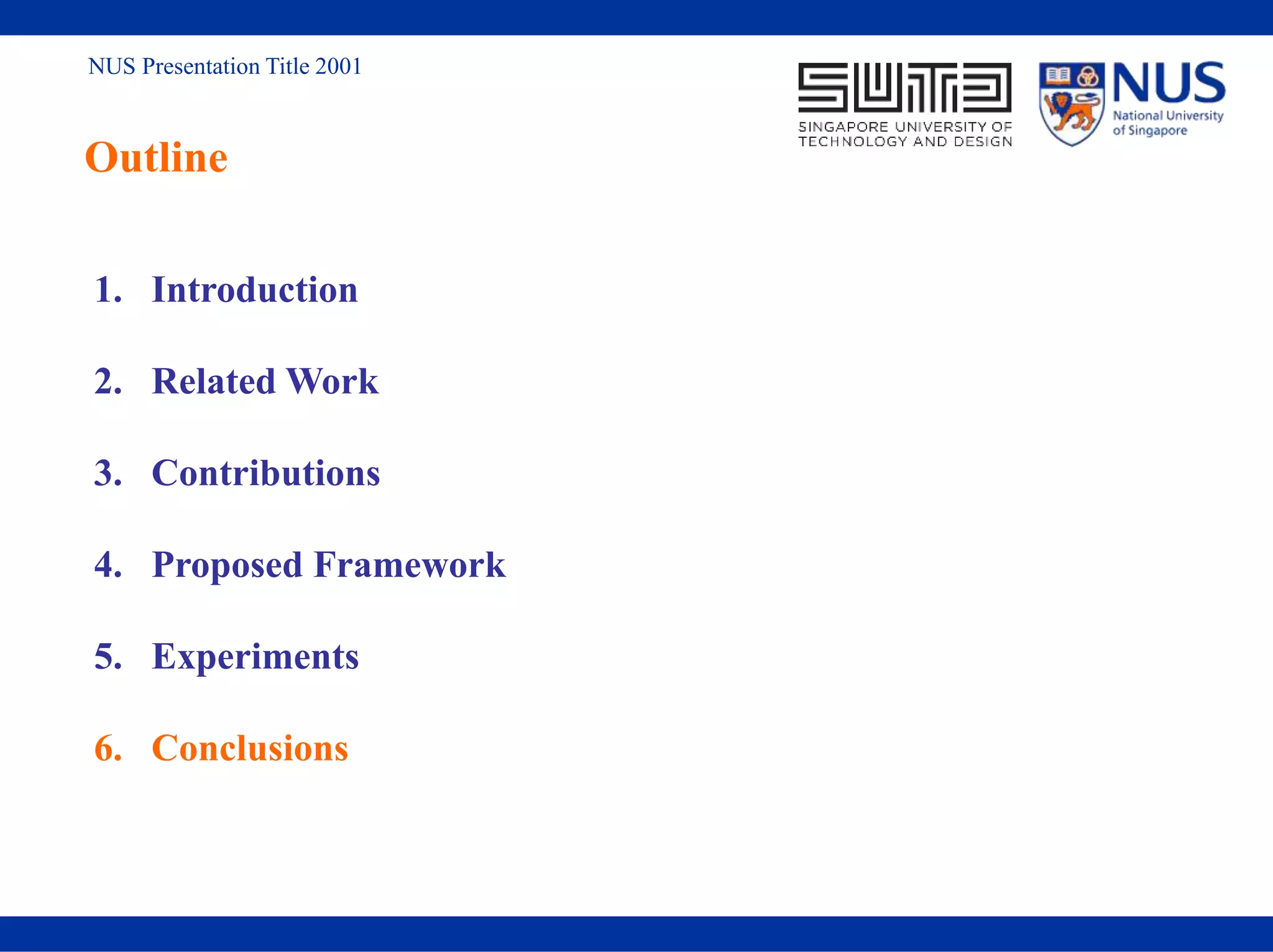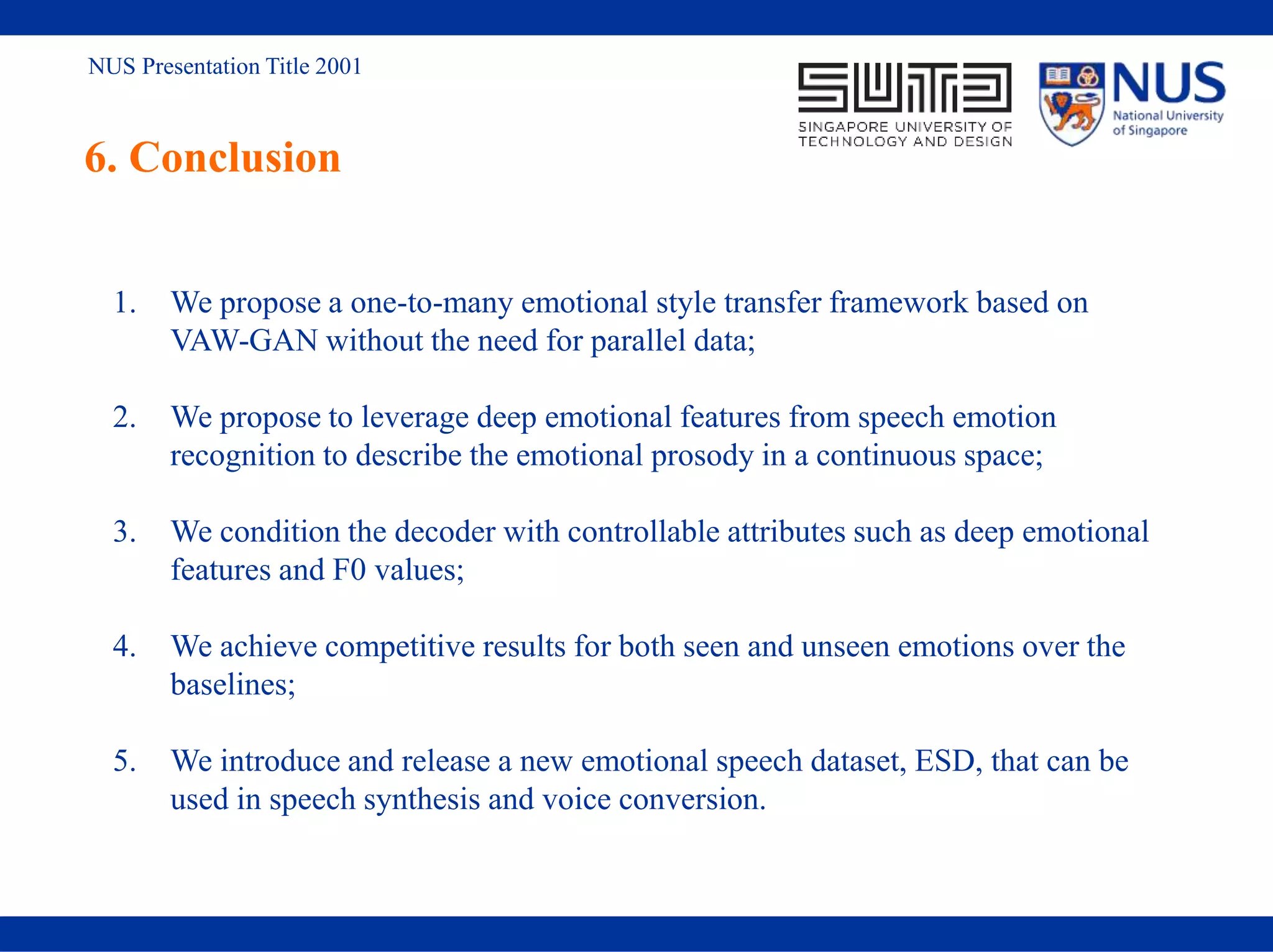This document presents a novel emotional voice conversion framework that allows for one-to-many emotional style transfer without the need for parallel training data. It addresses challenges in emotional voice conversion, such as non-parallel training, by utilizing deep emotional features and a newly introduced emotional speech dataset (ESD). The proposed method demonstrates competitive results for both seen and unseen emotions in various experiments, enhancing applications in emotional text-to-speech and conversational agents.
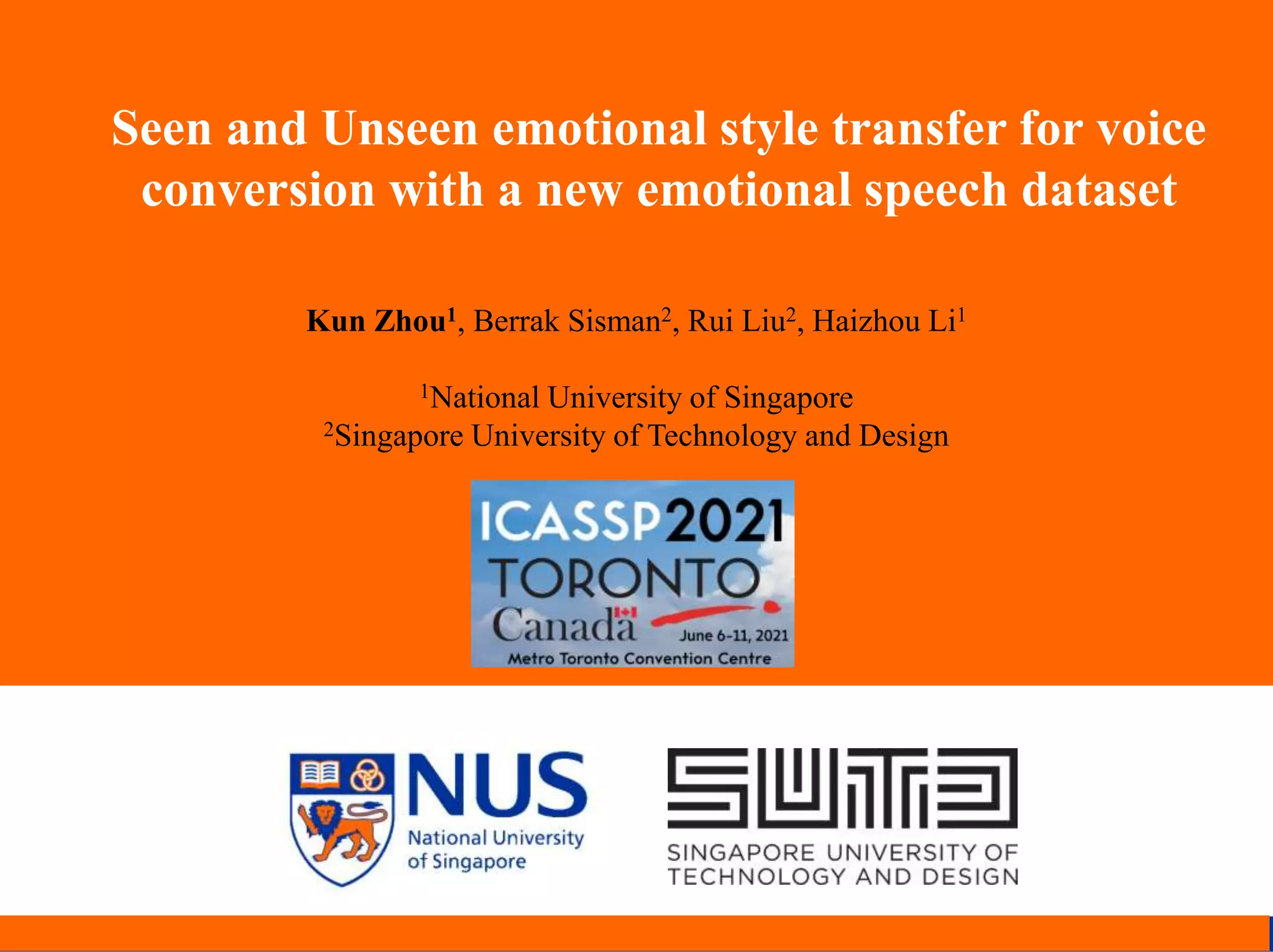
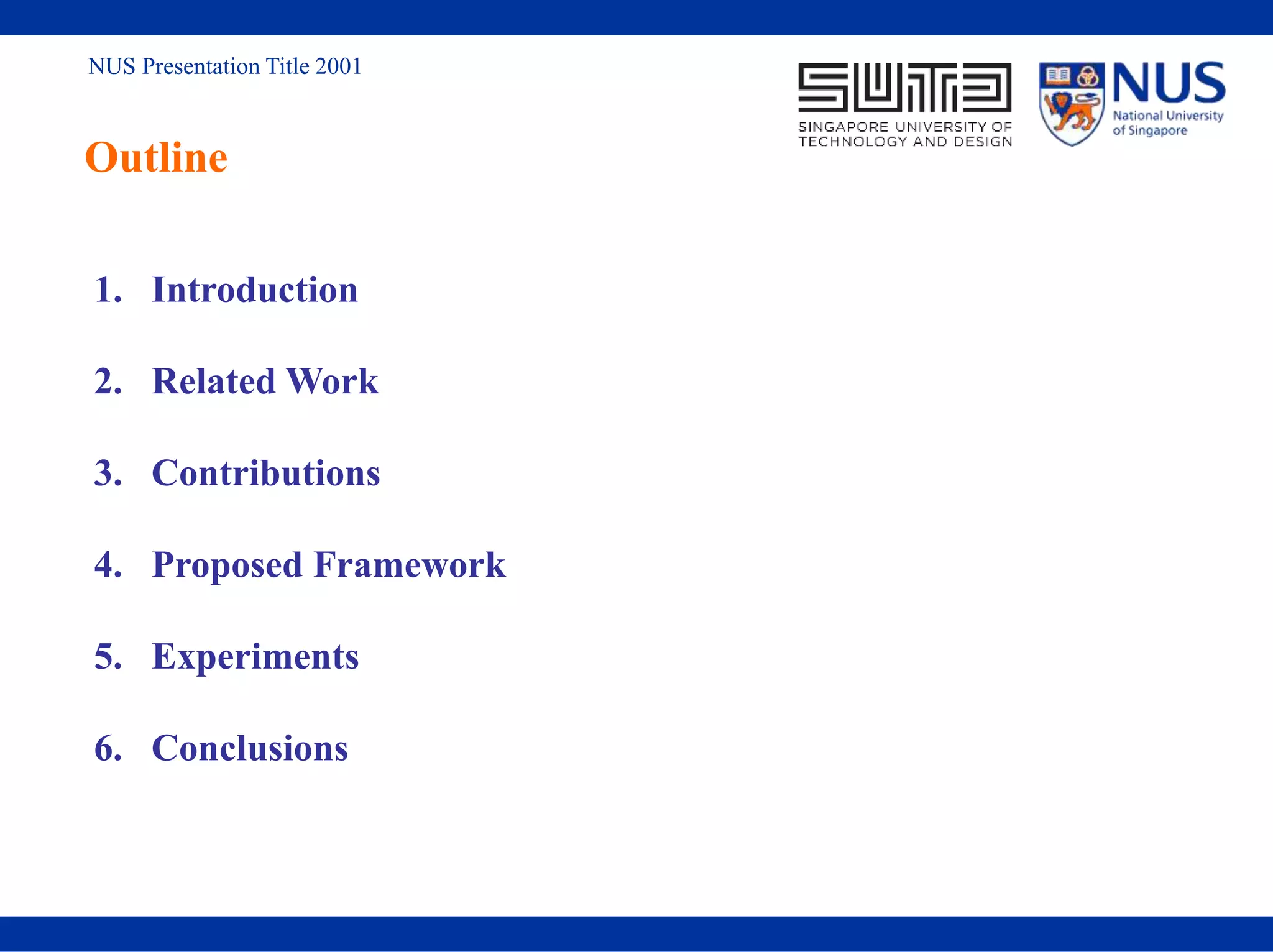
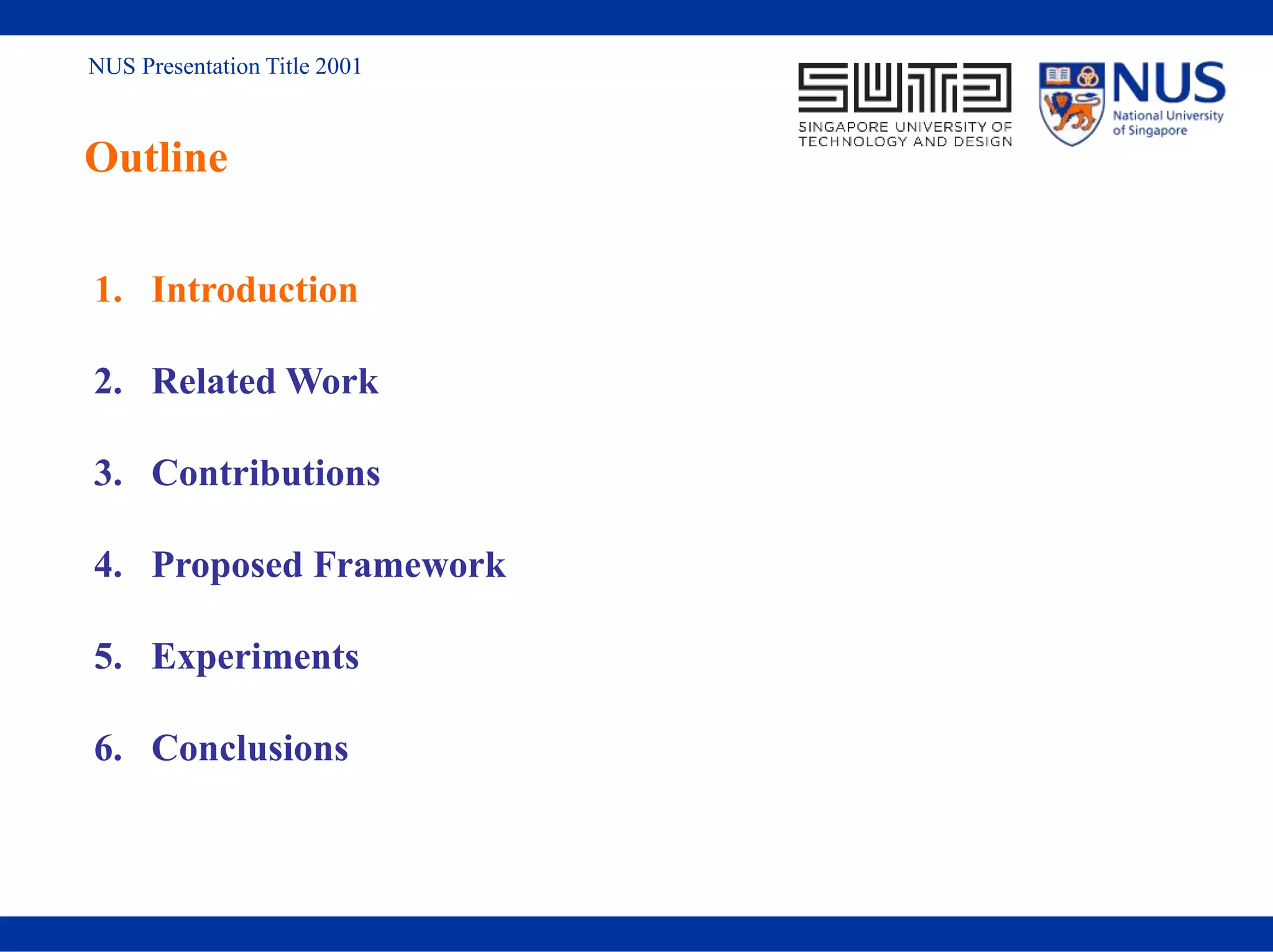


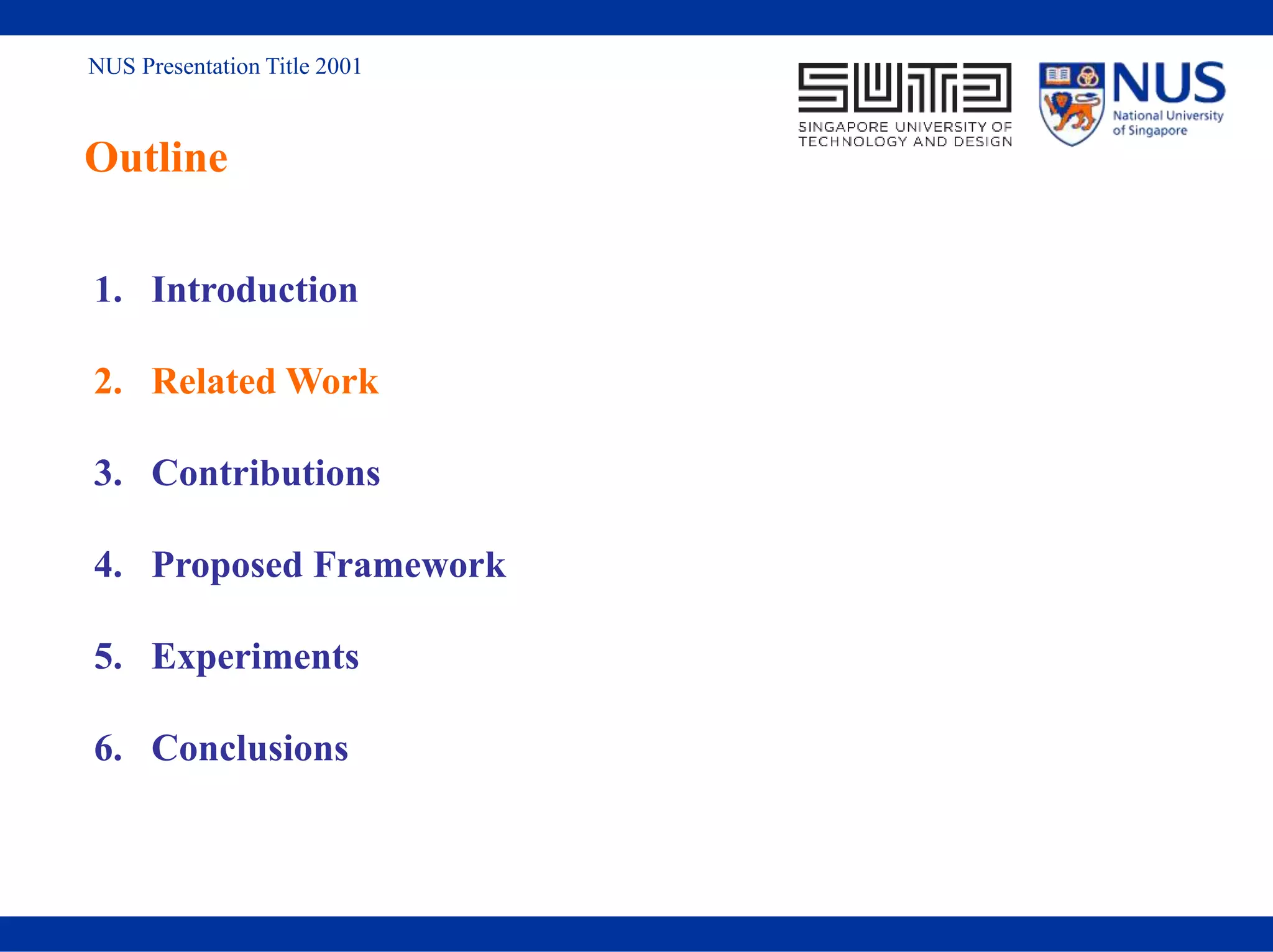
![NUS Presentation Title 2001
2. Related Work
2.1 Emotion representation
1) Categorical representation
Example: Ekman’s six basic emotions theory[1]:
i.e., anger, disgust, fear, happiness, sadness and surprise
2) Dimensional representation
Example: Russell’s circumplex model[2]:
i.e., arousal, valence, and dominance
[1] Paul Ekman, “An argument for basic emotions,” Cognition & emotion, 1992
[2] James A Russell, “A circumplex model of affect.,” Journal of personality and social psychology, vol. 39, no. 6, pp. 1161, 1980.](https://image.slidesharecdn.com/icassp2021-210422062928/75/IEEE-ICASSP-2021-7-2048.jpg)
![NUS Presentation Title 2001
2. Related Work
2.2 Emotional descriptor
1) One-hot emotion labels
2) Expert-crafted features such as
openSMILE [3]
3) Deep emotional features:
[3] Florian Eyben, Martin Wöllmer, and Björn Schuller, Opensmile: the munich versatile and fast open-source audio feature extractor, Proceedings of the
18th acm international conference on multimedia, 2010, pp. 1459–1462
-- data-driven, less dependent on human
knowledge, more suitable for emotional
style transfer…](https://image.slidesharecdn.com/icassp2021-210422062928/75/IEEE-ICASSP-2021-8-2048.jpg)
![NUS Presentation Title 2001
2. Related Work
2.3 Variational Auto-encoding Wasserstein Generative Adversarial
Network (VAW-GAN)[4]
Fig 2. An illustration of VAW-GAN framework.
- Based on variational auto-encoder
(VAE)
- Consisting of three components:
Encoder: to learn a latent code from the
input;
Generator: to reconstruct the input from the
latent code and the inference code;
Discriminator: to judge the reconstructed
input whether real or not;
- First introduced in speaker voice
conversion in 2017
[4] Chin-Cheng Hsu, Hsin-Te Hwang, Yi-Chiao Wu, Yu Tsao, and HsinMin Wang, “Voice conversion from unaligned
corpora using variational autoencoding wasserstein generative adversarial networks,” in Proc. Interspeech, 2017.](https://image.slidesharecdn.com/icassp2021-210422062928/75/IEEE-ICASSP-2021-9-2048.jpg)
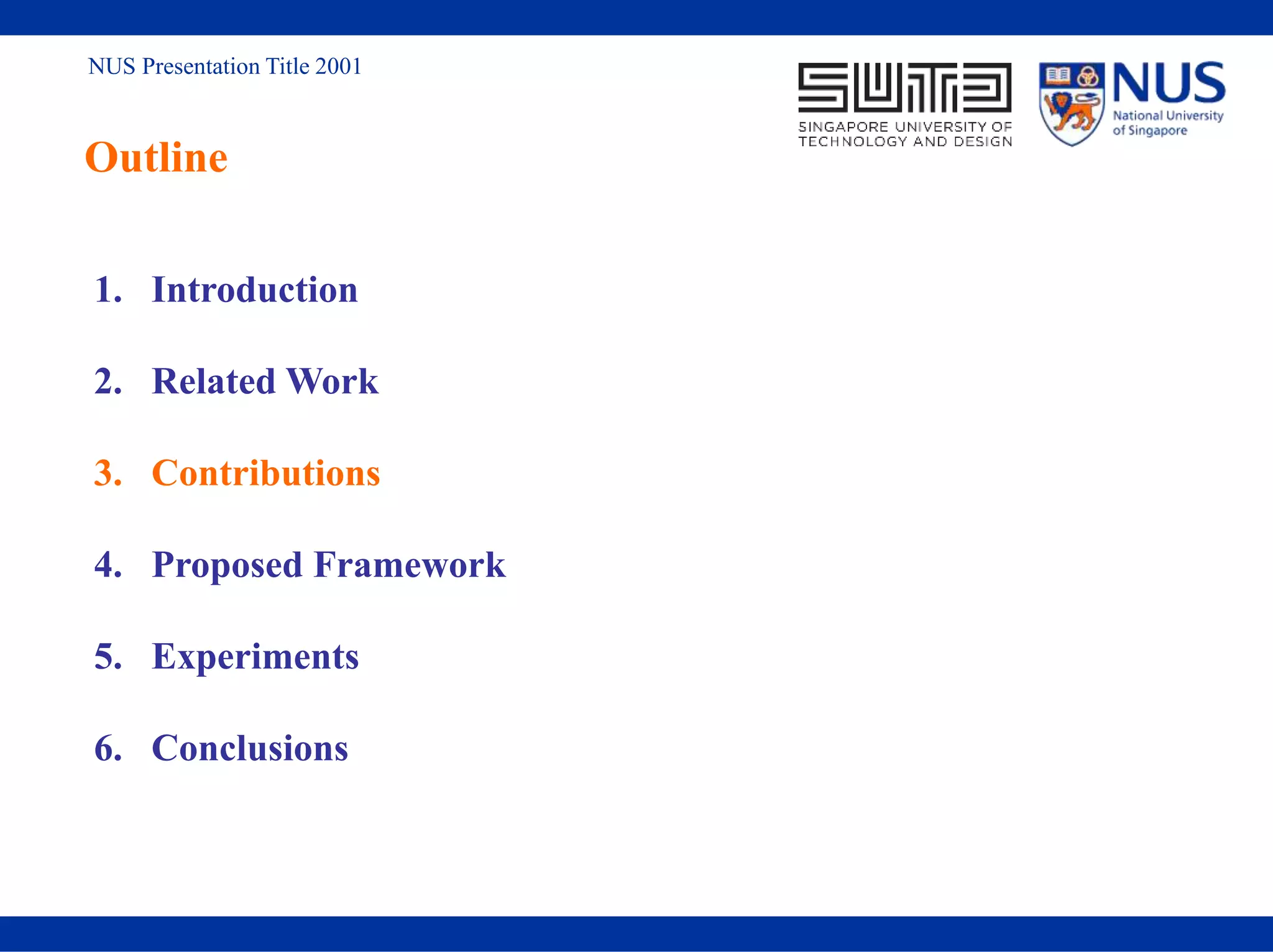
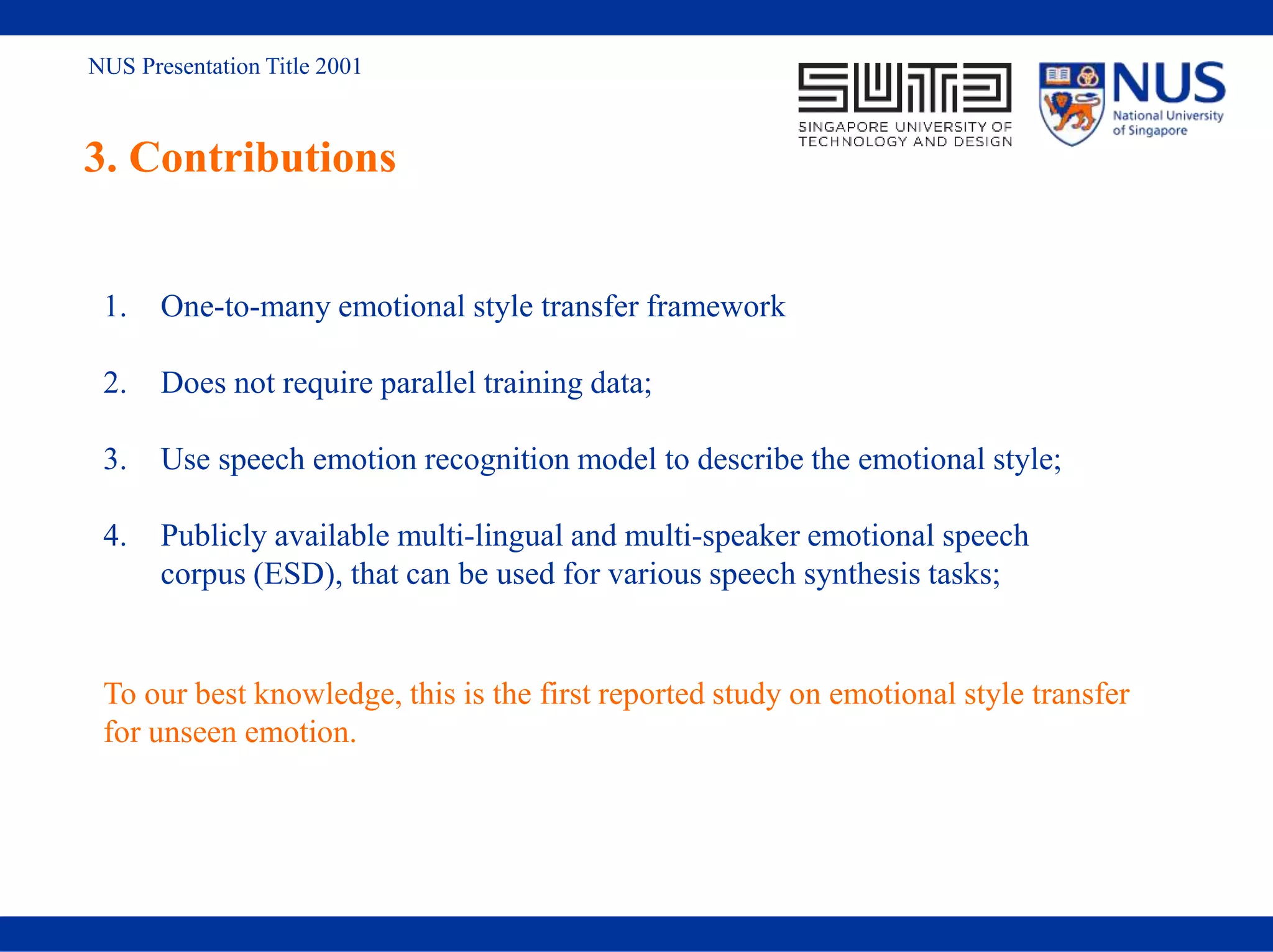
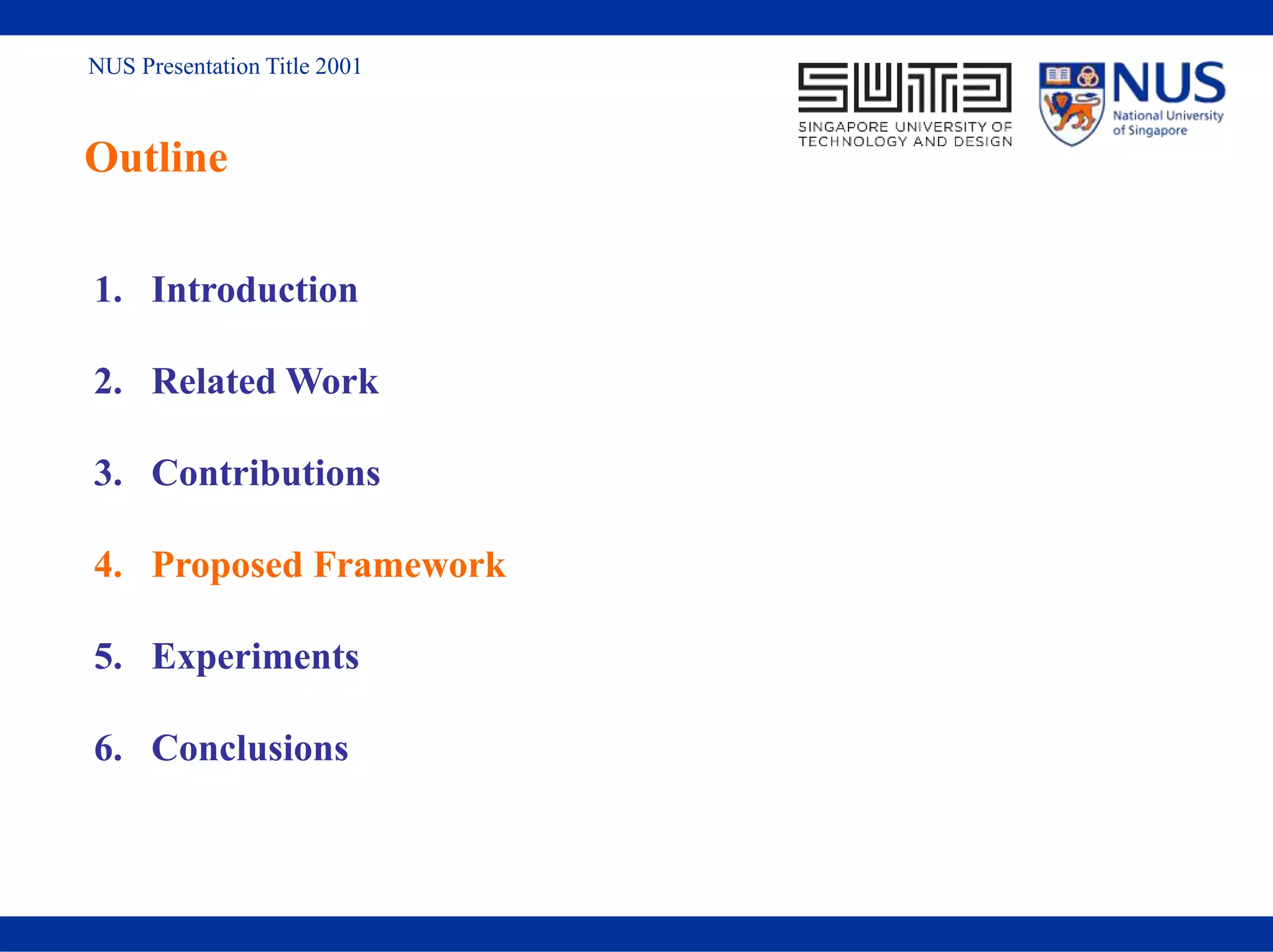
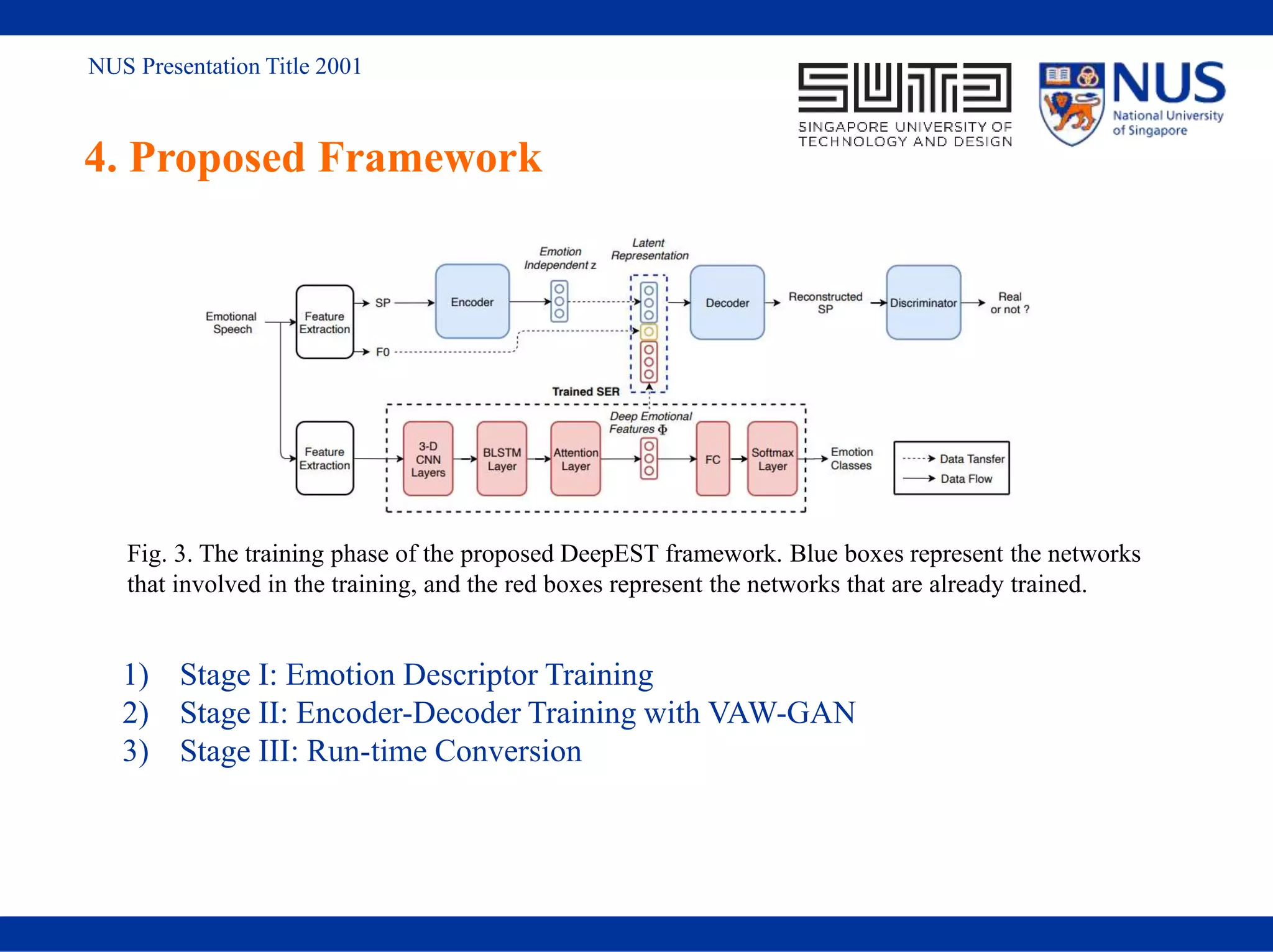
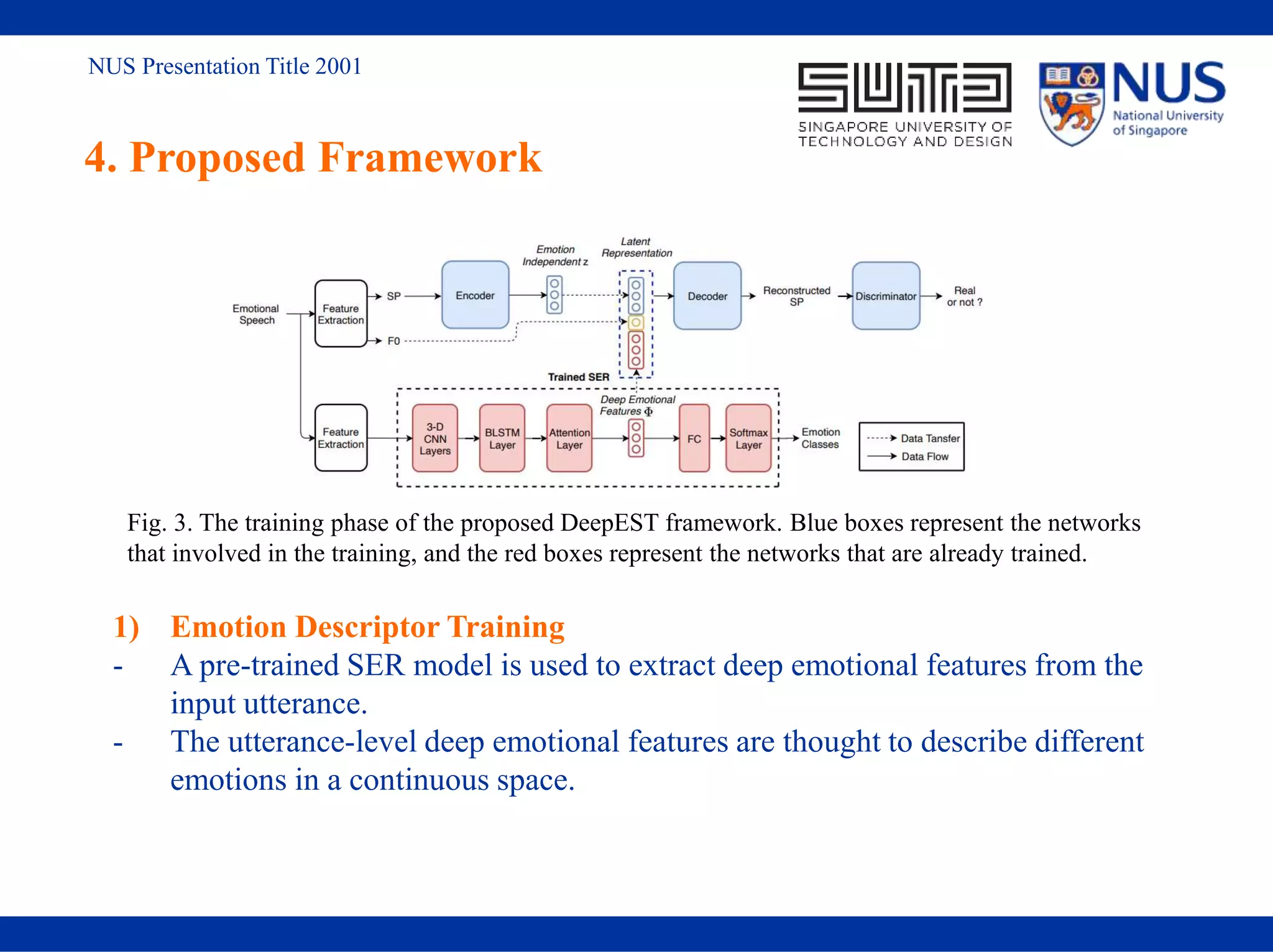
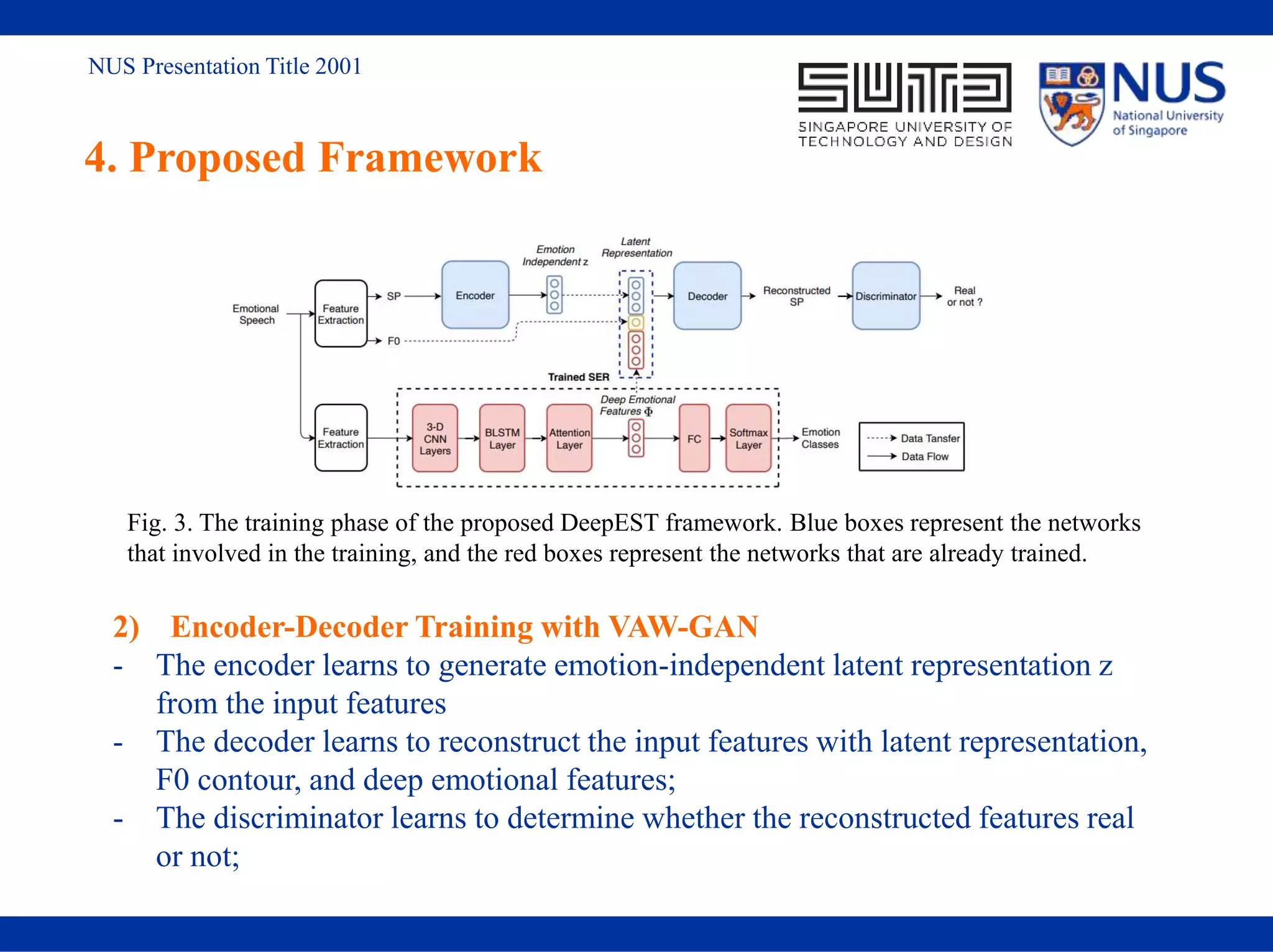
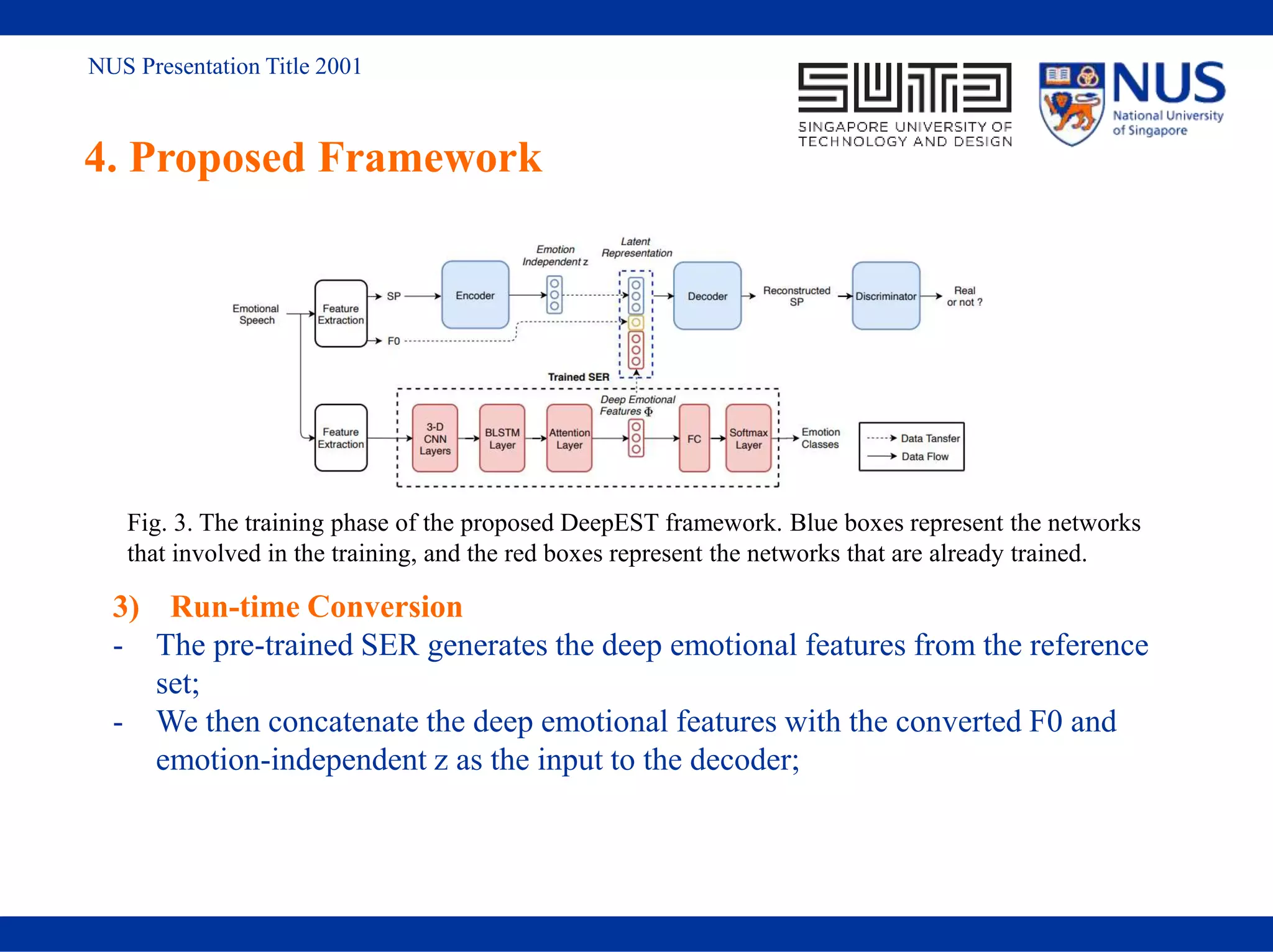
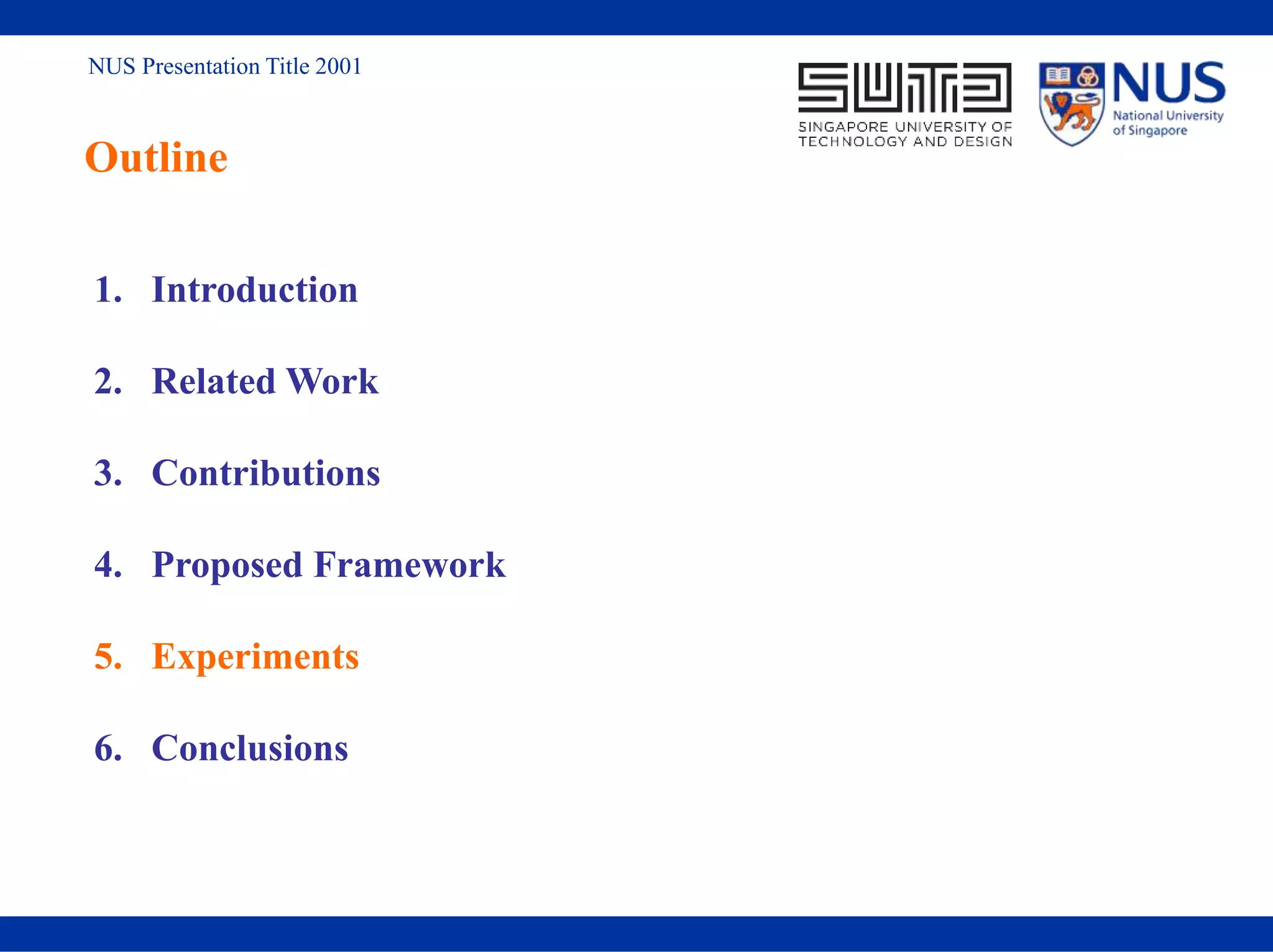

![NUS Presentation Title 2001
5. Experiments
5.2 Experimental setup
1) 300-30-20 utterances (training-reference-test set);
2) One universal model that takes neutral, happy and sad utterances as input;
3) SER is trained on a subset of IEMOCAP[5], with four emotion types (happy, angry,
sad and neutral)
4) We conduct emotion conversion from neutral to seen emotional states (happy, sad)
to unseen emotional states (angry).
5) Baseline: VAW-GAN-EVC [6]: only capable of one-to-one conversion and generate
seen emotions;
Proposed: DeepEST: one-to-many conversion, seen and unseen emotion generation
[5] Carlos Busso, Murtaza Bulut, Chi-Chun Lee, Abe Kazemzadeh, Emily Mower, Samuel Kim, Jeannette N Chang,
Sungbok Lee, and Shrikanth S Narayanan, “Iemocap: Interactive emotional dyadic motion capture database,” Language
resources and evaluation, vol. 42, no. 4, pp. 335, 2008.
[6] Kun Zhou, Berrak Sisman, Mingyang Zhang, and Haizhou Li, “Converting Anyone’s Emotion: Towards Speaker-
Independent Emotional Voice Conversion,” in Proc. Interspeech 2020, 2020, pp. 3416–3420.](https://image.slidesharecdn.com/icassp2021-210422062928/75/IEEE-ICASSP-2021-19-2048.jpg)
![NUS Presentation Title 2001
5. Experiments
5.3 Objective Evaluation
We calculate MCD [dB] to measure the spectral distortion
Proposed DeepEST outperforms the baseline framework for seen emotion
conversion and achieves comparable results for unseen emotion conversion.](https://image.slidesharecdn.com/icassp2021-210422062928/75/IEEE-ICASSP-2021-20-2048.jpg)
